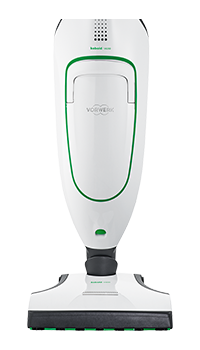How smart does a vacuum cleaner need to be?
With my gadget-man hat on, I had a demo this week of the most spectacular vacuum cleaner. It arrived in an array of cases with multiple components and a trained demonstrator to walk me through it.

This is not the Rolls Royce of vacuum cleaners. That would imply conspicuous expenditure. This is more a boy scout in a BMW: beautifully engineered and prepared for anything.I’ll be writing up a full review of the Vorwerk VK200 over on The Loadout, but what struck me most about this system was its smarts. This is a highly intelligent vacuum cleaner.
Smarts in action
This was made clear at two points in the demonstration, one deliberate, one less so.The first occasion was in showing the transitions from carpet to hard floor. The cleaner head has ultrasonic sensors to not just detect this transition but to understand how deep the carpet might be and adjust the suction and profile accordingly.Impressive.The second occasion was when the unit started misbehaving. I felt for the demonstrator, having been in that situation. It’s uncomfortable. But I didn’t read too much into it: these are products with a 17–25 year lifespan. The worst is bound to happen in a demonstration.What surprised me was his response. Not “I’ll have to fix that,” but “I’ll have to reprogram that.” This is a vacuum cleaner smart enough to be fixable by plugging in a USB cable.
Ubiquity
The processing power required to support such capabilities is hardly spectacular by modern standards. But nonetheless it struck me that yet another formerly dumb item is now smart. Not just because it has a small digital brain but because it can sense its environment and respond.When you’re looking to the future, one of the critical things to understand is just how far and how fast the price or technology falls, and its accessibility increases. The more widely used and deployed a technology becomes (often a factor of price), the more shared knowledge there is about how to deploy it. This drives further application and the price falls again, continuing the cycle.The result is that we see technology in all sorts of applications where previously it may have seemed unrealistically expensive or complex to implement. Sometimes that’s frivolous — the WiFi Kettle being a good example — and sometimes that smarts is put to good use, as in the VK200.This ubiquitous application of technology — in all its forms — drives competition, often from unforeseen sources. People with a problem recognise a technology-driven solution and see that it can be constructed with relative ease. They then launch themselves into a market that may have seen little new competition in decades.Unless your peripheral vision is alert to incoming technologies and the challenges they might carry, your business is at serious risk.